As you may have gleaned from earlier posts, the container is chosen to enhance the floral material. Many traditional Ikebana containers are ceramic works of art. Today, we use glass containers, clear or colored. (You might want to look back through earlier posts and see what I mean.) When you browse the Internet, you see more non- traditional choices in recent years with freestyle or contemporary arrangements.
This post shows two containers from the Ichiyo School of Ikebana in which I am an instructor. I have others that are Japanese, but I don’t know from what school they are. Additionally, there are those that I purchased at estate sales, consignment stores, or thrift shops; who knows their origin! You will find that when a container catches the Ikebana artist’s eye, it has found a home.
This post shows two containers from the Ichiyo School of Ikebana in which I am an instructor. I have others that are Japanese, but I don’t know from what school they are. Additionally, there are those that I purchased at estate sales, consignment stores, or thrift shops; who knows their origin! You will find that when a container catches the Ikebana artist’s eye, it has found a home.
In each case above, the tinge of mauve in the darker bluish purple is picked up by the choice of flower color. Looking through my files, it seems that I always use rose or mauve flowers in this container. I really must try using blue flowers like Delphiniums, Hyacinth-Delft-Blue or Endless Summer, Campanula (Bellflowers), Blue Salvia, or blue Agapanthus. The possibilities are endless as long as I do not use a blue orchid. That blue supermarket staple is really a white orchid that has been dyed a garish blue. We don’t use dyed flowers in Ikebana.
This container has a heavy appearance that doesn’t belie its heft. I only use it when it works with the available floral materials. Here, I surprised myself in that I used flowers that are clearly late springtime garden offerings, bearded irises and roses. In early spring, I find that evergreen or heavy branches suit the container and the season as on the right above.
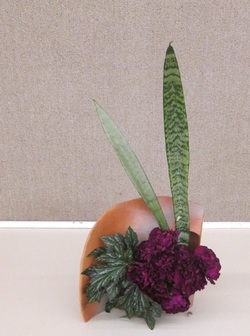
The split complement of orange and purple
gives a dramatic flair to this arrangement.
The triangle of negative space, bounded by
the two Sansevieria leaves, provides linearity.
gives a dramatic flair to this arrangement.
The triangle of negative space, bounded by
the two Sansevieria leaves, provides linearity.
Notice the gray midollino (cane fibers) that complement the dramatic gray stripe. This addition is popular in the Sogetsu school. Again, the purple and orange color families communicate, but the message is softer than in previous arrangement.
The serrated leaf adds interest that finishes what might be considered the completion of reversed gray S-shape originating from the bottom of the container. The pale orange lilies echo the same color family.
Using this container for an ascending Moribana, gives a different effect, especially with materials that are in the same color family. Additionally, it echoes autumn.
Looking critically at these three containers, we get but a peek at some features one needs to consider when creating an arrangement. Each container has its own voice and speaks in concert with the flower language of color, shape, and size.
Choose the container for your next arrangement with these thoughts in mind. What do you have on the shelf that intimidates you? Use it, take a picture, and post in the comments.
Until next time,
Henderson
Choose the container for your next arrangement with these thoughts in mind. What do you have on the shelf that intimidates you? Use it, take a picture, and post in the comments.
Until next time,
Henderson
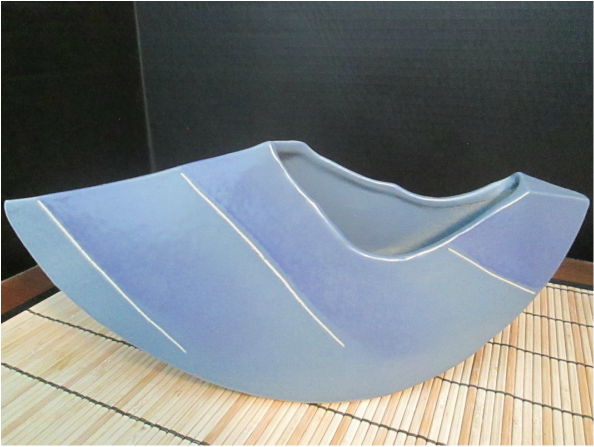
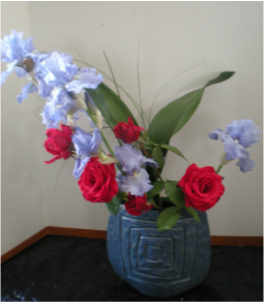
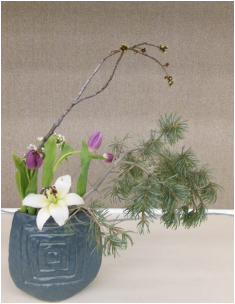
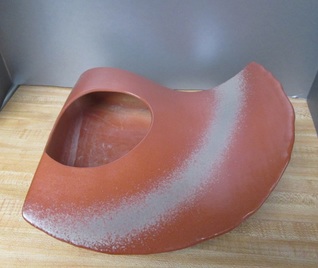
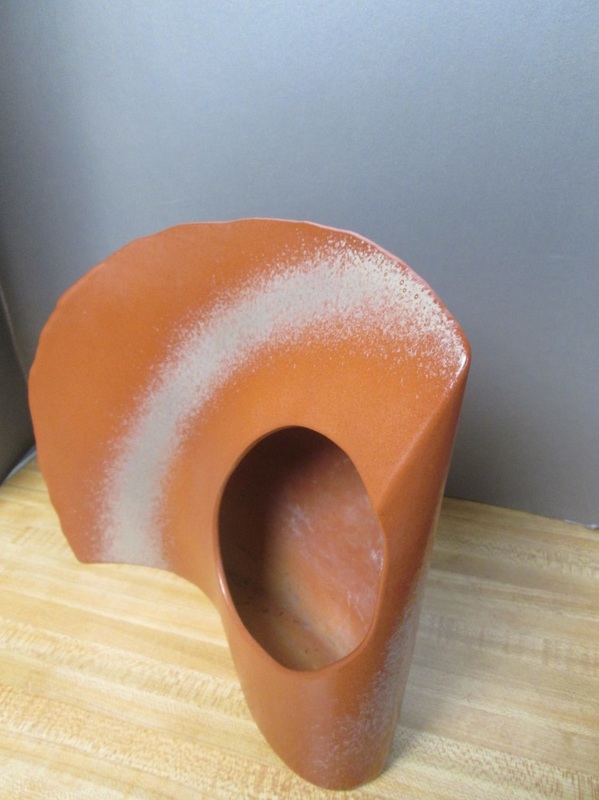
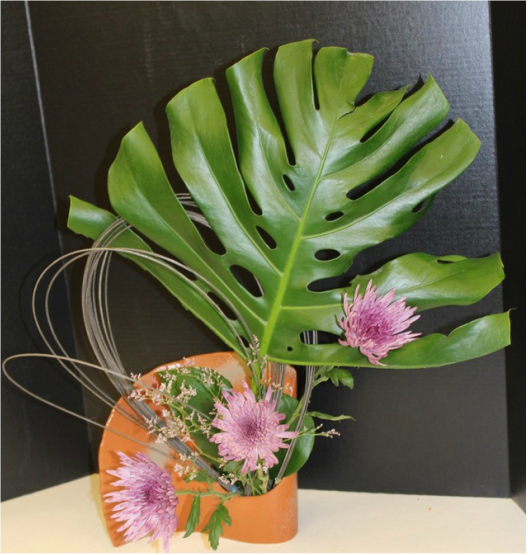
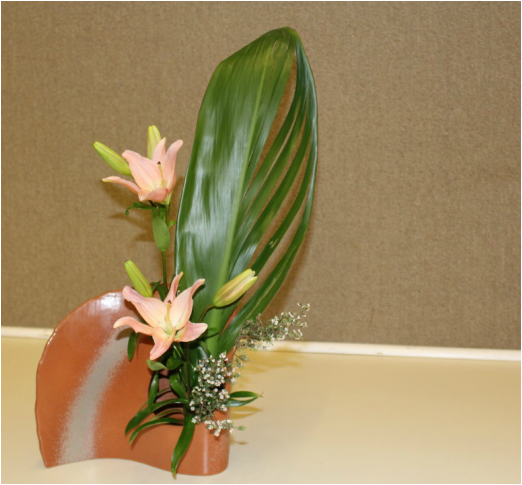
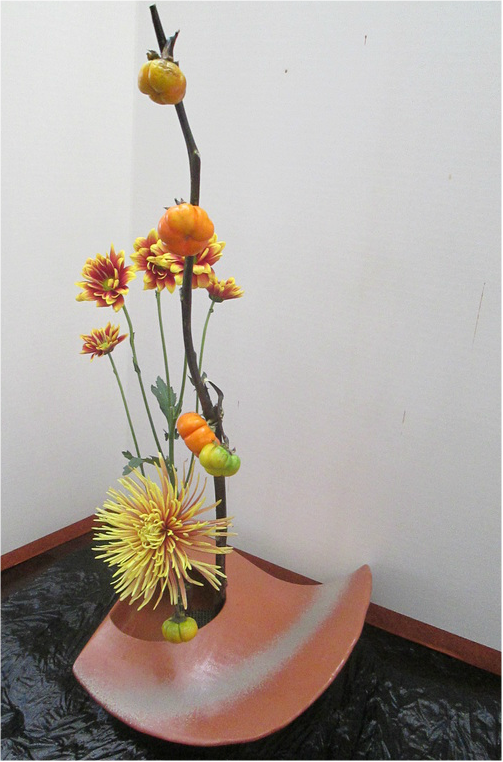
 RSS Feed
RSS Feed
